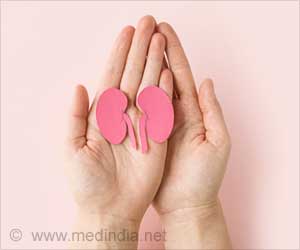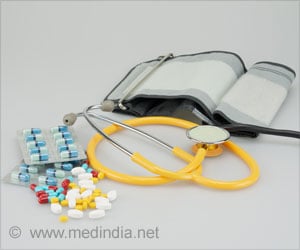A paper was presented in the 21st Annual Meeting of the American Society of Hypertension in New York City.
A paper was presented in the 21st Annual Meeting of the American Society of Hypertension in New York City. This revealed the link between the female sexual dysfunction (FSD) and high blood pressure. According to the study it is said that mostly women with increased hypertension and increased age suffer from FSD. Female sexual dysfunction is defined as persistent or recurring decrease in sexual desire, persistent or recurring decrease in sexual arousal, a difficulty in or inability to achieve an orgasm, and pain during sexual intercourse (dyspareunia).Researchers who evaluated more than 400 women at an outpatient clinic in Greece found sexual dysfunction in more than twice as many of those with essential hypertension as those with normal blood pressure.
They also found that sexual dysfunction rates gradually increased in older versus younger hypertensive women and that the longer a woman had hypertension the more likely she was to experience sexual dysfunction. ‘These findings are significant because although hypertension affects more than 20 percent of the general population, and is a known risk factor for male sexual dysfunction, there have been no definite data on a relation between sexual dysfunction and hypertension in women,’ said study presenter Michael Doumas, MD of the Department of Internal Medicine at the University of Athens.Dr. Doumas and colleagues evaluated sexually active Caucasian women aged 31 to 60 years with (n=216) and without (n=201) hypertension using the questionnaire called the Female Sexual Function Index (FSFI). The questionnaire consisted of 19 questions and provided information on several domains of female sexual function, such as desire, arousal, lubrication, orgasm, satisfaction and pain. Female sexual dysfunction was defined as an FSFI score of less than 25.5, according to the recently reported cut-off score. Results showed that more than four out of ten (42.1%) women with hypertension had FSD compared to fewer than two out of ten (19.4%) normotensive women (p<0.001).
Among those with hypertension, FSD was also more frequent in treated (47.8%) as opposed to untreated (32.5%) women. Inadequate control of hypertension was associated with FSD, as women with uncontrolled hypertension had significantly higher prevalence of sexual dysfunction (51.8%) compared to women with controlled hypertension (27.2%). Sexual dysfunction rates were higher among older women, with one-in-five (21.2%) aged 31-40 reporting problems, nearly two-in- five (37.7%) aged 41-50 having difficulties, and nearly three-in-five (56.8%) of those 51-60 experiencing FSD (p<0.001). Among women with hypertension for less than three years, fewer than two-in-ten (15.7%) experienced FSD; for those with hypertension 3-6 years the rate was more than three-in-ten (32.9%) and for those with hypertension for more than six years the rate was nearly eight-in-ten (78.6%, p<0.001).
‘Internists and general practitioners are in a unique position to properly recognize FSD and help women facing these intimate problems, since many women with chronic conditions exhibit sexual dysfunction,’ said Dr. Doumas. ‘Quality of life is very important to overall health, thus it is of utmost importance for internists and general practitioners to become familiar with FSD and routinely address it with their hypertensive patients.’
Source: Newswise










